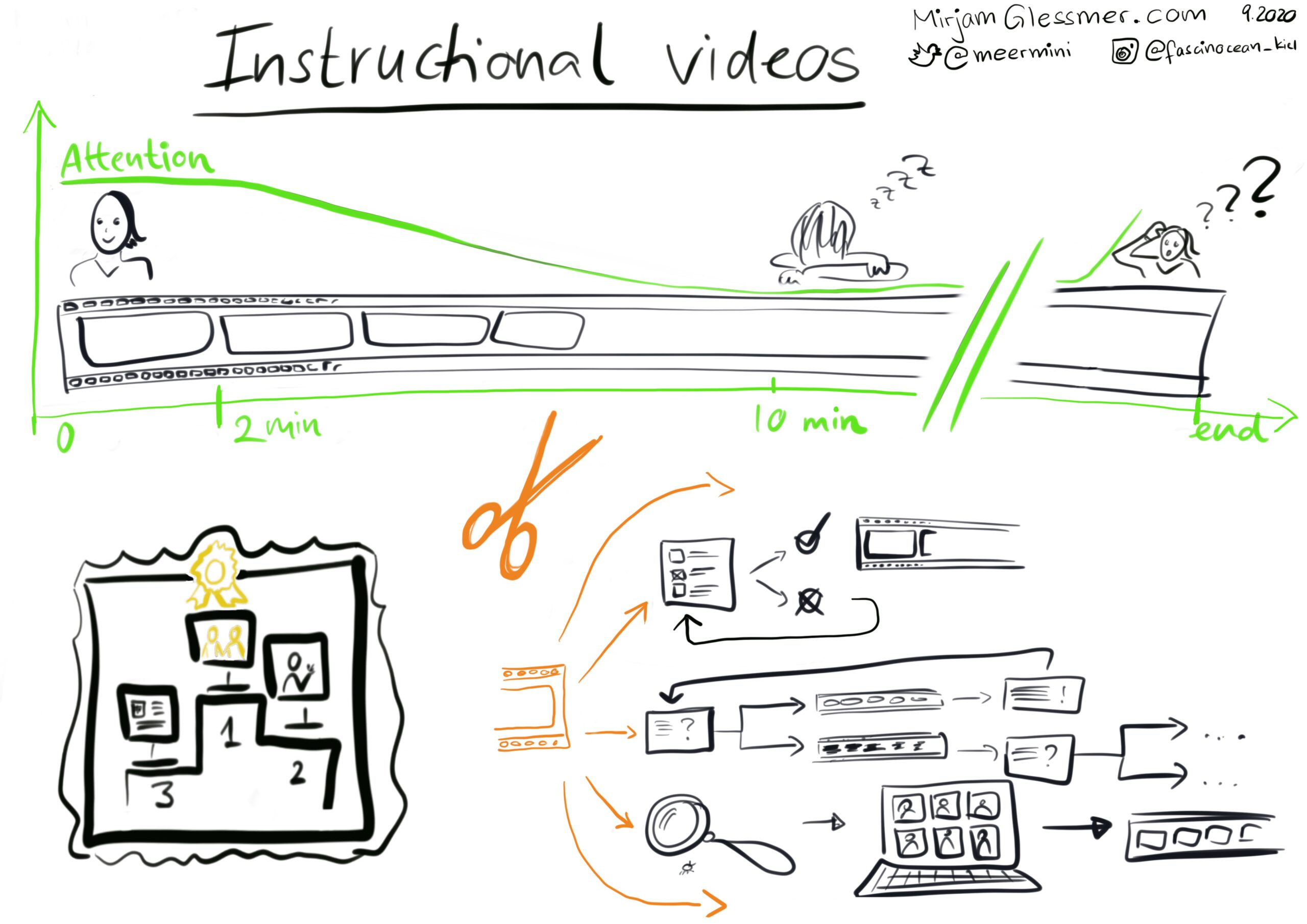
Instructional videos in a nutshell
I am completely in love with my new tablet. I love drawing on it and even though the results are not quite up to my standards yet, I am too excited to not share. So here I drew what (I think) you need to know about instructional videos, in a nutshell:
They should be short!
Attention spans are short. Students are listening to you blabber on on the same devices they usually watch youtube or whatever else entertaining they watch. It is very difficult to stay focussed if the noise of someone talking is coming from the same device that you usually don’t pay full attention to, but just have on in the background for company. Don’t you sometimes realize with a start that you would kinda like to replay that thing someone just said in a video meeting that you missed because you kinda dozed off? Yeah, like that. No matter how tempting it is to just record a regular 45 min lecture (or 90min or whatever), just don’t do it!
I’ve seen advice from online course providers that have access to data on user engagement, and we know we prefer youtube videos under 10ish minutes of length, and there is a reason TED talks are short and sweet. The typical recommendations I read are between 2 and 10 minutes length! That’s shockingly short.
Record with a buddy!
For lecture videos, it doesn’t have a large impact on learning outcomes what the exact format of the recodfing is, but students prefer to actually see their instructor.
And be authentic! The other day I talked to someone who felt like he needed to be super formal in the videos because his humor is so quirky that not everybody might find it funny, but him playing a role makes it really difficult to connect to him. Especially when students have very little or no in-person instruction these days, it is really important for them to get to see “a real oceanographer” (or whatever else your field may be) they can identify with. And if there is two of you, chances are twice as good they find someone who can act as a role model for them (when choosing your buddy, don’t forget that representation matters…). Also, especially when reporting from the field or the lab (which is the context I am most concerned with right now), videos are a lot more entertaining to watch if there are two or more people interacting than if it’s just a monologue! Plus the second person can be great to elicit misconceptions that you can then confront and resolve…
Bring in active phases!
If you are only “allowed” a couple of minutes of instructional video in one piece anyway, what a great opportunity to do active learning in between! :-)
There are so many options, for example:
- include a multiple choice test that students have to pass before moving on to the next video
- set the videos up in a “choose your own adventure” style, e.g. asking students to pick what step they want to conduct next in a lab, and if they end up in a dead end, they have to retrace their steps to find a better way to do things
- give them small hands-on home experiments (kitchen oceanography ftw) that they do, that you then discuss on a video call or submit their answers to you, before they watch the next video
For me, it’s at the same time super stressful and extremely exciting to be designing a lot of new content in these new-to-me virtual formats, but mainly I see it as an enormous opportunity to deliver teaching in a way that helps students cope in really difficult times, and that might also be useful afterwards (at least in parts). What are your thoughts on instructional videos?
